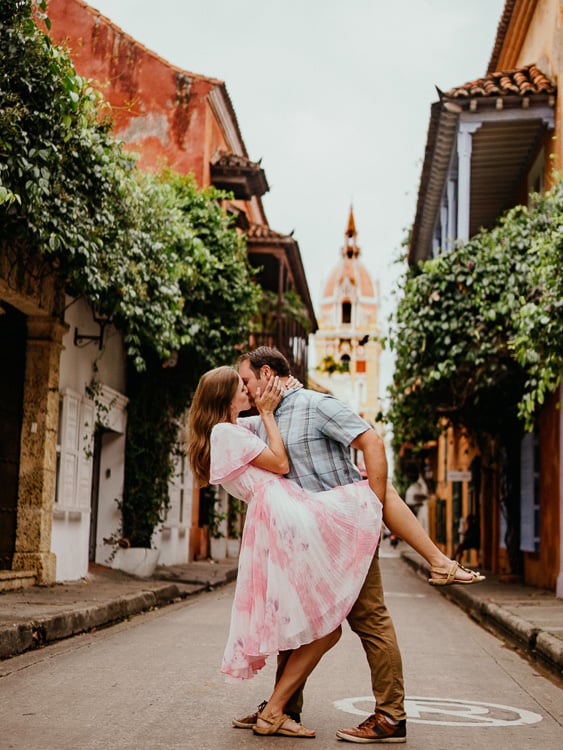This Is What Sustainable Travel in Europe Actually Looks Like: 8 Simple Ways to Reduce Your Impact

From accommodation to getting around, the way we travel can have a real impact on the places we visit. Sustainable travel is about being mindful of our habits to ensure they have a positive impact on local communities and the environment.
Europe has some of the world’s most sustainable countries, but it also faces serious challenges from mass tourism. Overcrowding at the Louvre in Paris and the Airbnb crisis in Barcelona are just two examples.
While the tourism industry has a big role to play in building long-term solutions, there are still small changes travellers can make that can have a lasting impact. That might look like cutting down on flights, supporting local businesses, or slowing down to appreciate where you are.
This starter guide to sustainable travel in Europe has simple, practical tips to help you have a lighter footprint, without taking the joy out of your trip.
1. Travel Slowly and Stay Longer
Holidays are supposed to be a break from our busy lives, but have you ever felt like you needed another holiday after you got home? You might be trying to squeeze in too much.
Instead of rushing to tick everything off, spend more time getting to know each place you visit. Start by cutting down the number of stops in your itinerary and giving yourself space to slow down.
You don’t need to be a long-term traveller to take it slow. Whether you’ve got a week or a month, the idea stays the same: by doing less, you experience more.
Slow travel helps you make real connections and find authentic everyday experiences instead of cramming in all the big attractions designed for the tourist’s benefit.
For example, instead of trying to see all the highlights of France in a two-week itinerary, you spend a week or two getting to know Provence.
You notice the small details and get a better feel for the place. It’s better for the planet, better for local communities, and you return home feeling rested rather than exhausted.
2. Go Car-Free When You Can
A standard car emits around 4.6 metric tons of carbon dioxide a year, depending on its fuel efficiency and how many miles it racks up.
One of the best ways to reduce your carbon footprint when you travel is to make use of public transport. Europe is more well-connected than you might think, and you can explore most towns and cities without a car.
Navigating new public transport networks can take a bit of planning, but you don’t have to worry about traffic, tolls, car rentals or finding places to park.

Plus, most major European cities have clean air regulations in place to protect citizens from traffic pollution. Paris has permanent low-emission zones which require most vehicles to have a Crit’Air vignette sticker at certain times of the week. Failure to comply can get you fined from €68 up to €180!
Public transport isn’t just limited to towns and cities. You might be surprised by how far into the countryside you can go. I’ve travelled deep into the Scottish Highlands without a car, using trains, buses and the occasional small group tour to help me access more remote areas.
My best advice for going car-free is to check up-to-date timetables in advance. Use country-specific journey planners rather than relying on Google Maps, as I’ve found it doesn’t always show the most accurate route.
3. Fly Less and Travel by Train
Flying accounts for around 2.4% of global CO2 emissions. A short-haul flight may seem quick and convenient, but the environmental impact adds up. The good news travelling without flying is easy in Europe, thanks to the extensive rail network.
France has even banned domestic flights if there’s a train alternative that takes less than two and a half hours. Trains are a lot less stressful than flying. There’s no need to get to the station hours before, like you do for airports or worry about whether your shampoo bottle is under 100ml.

High-speed trains can take you all over the continent, and you don’t have to lose valuable sightseeing days. Sleeper trains are making a comeback, giving you the chance to travel hundreds of miles overnight.
One of the biggest sleeper services is Nightjet, which can take you to more than 25 European cities across Austria, Switzerland, France, Croatia, Italy and Germany. You can choose between a sleeping car, a couchette or a seat depending on your budget and style.
Travelling by train is a mindset change. Rather than viewing the journey as a means to get from A to B like a flight, you make it part of your adventure. It’s a great way to slow down and appreciate the places you visit.
4. Follow the Principles of Leave No Trace
Leave No Trace is a set of guidelines to follow for responsible outdoor recreation, but you can apply the principles to all parts of your trip. These include:
- Plan ahead and prepare – know your route and the rules of the places you’re visiting. Can you fly your drone? Is the site sacred or culturally significant?
- Stay on established paths – keep to well-marked trails when you’re outdoors. Follow the rules and don’t go anywhere you’re not supposed to.
- Dispose of waste correctly – don’t leave any rubbish behind, even if there are no bins provided. Follow the country’s waste recycling system and reduce your single-use plastic consumption.
- Leave what you find – stones, shells, fossils and historical artefacts should be left exactly where they are to preserve the ecosystem.
- Minimise your campfire – this mainly applies to camping, but you should still follow fire safety rules in areas prone to wildfires. Dispose of all cigarettes and vapes responsibly in designated bins.
- Respect wildlife – animal exploitation is rife in the tourism industry. Don’t approach or try to touch wild animals; use certified operators that adhere to high animal welfare standards and avoid attractions using animals for entertainment.
- Be considerate of other people – treat others as you would like to be treated, whether they’re local people or fellow travellers. That means being polite, keeping noise levels respectful and respecting people’s homes and customs. Don’t film or photograph people without their consent, especially children.

5. Choose Ecotourism Activities
Fill your travel itinerary with ecotourism activities that actively give back to the planet. Ecotourism is a form of responsible travel that protects the natural world, empowers local communities and educates travellers.
So what does that look like in practice? These are low-impact outdoor experiences like hiking, cycling, birdwatching, stargazing, kayaking or planting trees.
You can do most of these activities yourself, but you’ll have a much more enriching experience if you book with ethical operators led by passionate local guides who teach you about the places you visit.
This could look like joining a Mont Blanc hiking expedition with expert mountaineers in France or restoring Scotland’s native forest on a tree-planting weekend.
These ecotourism activities give you a deeper appreciation for nature, and you’re supporting organisations working to preserve it for generations to come. It’s not just good for the Earth, but connecting with the outdoors benefits our wellbeing too.
6. Avoid Short-Term Rentals
Europe has an overtourism problem. According to the Responsible Tourism Partnership, this is defined as “destinations where hosts or guests, locals or visitors, feel that there are too many visitors and that the quality of life in the area or the quality of the experience has deteriorated unacceptably.”
Overtourism is fairly subjective. It could look like 30 extra people in a remote village or several million in a city, but when the growth in visitor numbers is poorly managed, it puts a strain on local people and the visitors’ own experience.
It largely comes down to infrastructure. Historic cities like Dubrovnik or Venice, with their narrow streets, weren’t built to accommodate huge crowds or cruise ships. Uncontrolled short-term rental companies like Airbnb also increase visitor numbers and rental prices, reducing affordable housing options for local people.
Instead of booking short-term rentals on Airbnb, look for independent, small-scale hotels, resorts and guesthouses. As well as contributing to the local economy, you might get to chat with the owners, learn a bit about the local culture, or get tips on places you’d never have found otherwise.
Take a look at Fairbnb and Socialbnb to find impactful and authentic stays away from the crowds that help you give back to the local community.
7. Support the Local Economy
Think about where you’re spending your money. Instead of picking up souvenirs from airport shops or chain stores, try visiting a local market or small independent shop.
I love finding unique gifts at local markets, like hand-woven baskets or handmade jewellery. You’ll often find something far more meaningful, and it helps keep traditional crafts and businesses going.

When it comes to food, stick to locally run places and farmers’ markets where possible. Avoid the big chains and tourist hotspots and look for small restaurants, cafés or street food stalls.
Not only is the food usually fresher and of better quality, but the money you spend goes to the local producers rather than a large international corporation.
8. You Don’t Need to Be Perfect At It
Sustainable travel isn’t about being perfect. You don’t need to overhaul the way you travel to make a difference. Small actions count. That could mean taking one car-free trip, choosing a longer stay in one place, or picking a lower-impact activity when you can.
Start with what feels realistic to you and build from there. More people making small, imperfect changes are more impactful than one person being perfect. Perfection is impossible, and you only set yourself up for failure if you try to achieve it.
Having a conscious understanding of the way your travel habits impact the places you visit is already an empowering step towards making positive changes.
Final Thoughts
Changing our habits to be more sustainable doesn’t mean giving up on comfort or fun. It adds more adventure and more meaningful experiences to your trip.
So, next time you’re travelling in Europe, why not try going car-free for a day or swap planes for trains? Even a small change can make a big difference.





